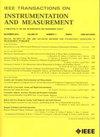Extrinsic Calibration and Spindle Axis Diagnostics of Linear Range Sensors in Rotating Configurations
IF 5.6
2区 工程技术
Q1 ENGINEERING, ELECTRICAL & ELECTRONIC
IEEE Transactions on Instrumentation and Measurement
Pub Date : 2025-01-24
DOI:10.1109/TIM.2025.3533643
引用次数: 0
Abstract
Obtaining a 3-D 360° reconstruction of environments or reconstructing hidden details of complex objects could be a difficult task or very expensive with current technologies. However, this challenge can be overcome by using a single profilometer in a rotating configuration. In this context, precise calibration of the sensor’s pose with respect to the rotating axis is critical for obtaining accurate and reliable data. This work presents a novel algorithm and procedure able to estimate the complete set of extrinsic parameters of a profile sensor rotating around a spindle, using a simple target, and to verify the spindle axis stability while suppressing both sensor and environmental outliers. The method can be exploited for 2-D laser scanners or time-of-flight sensors for centimeter-level accuracy in environmental scanning, as well as for triangulating laser-CCD line profilers for high-precision point cloud estimation with micrometer accuracy. The latter case particularly benefits from the algorithm’s ability to remove outliers originating from the sensor and/or environment, including background interference and moving objects like the mechanisms used to move the target. The algorithm was validated through both simulations and experimental tests. The resulting point clouds achieved an accuracy consistent with the sensor’s nominal specification, approximately 0.01 mm. Furthermore, it was demonstrated that it is possible to reveal spindle motion deviations, which can significantly affect the accuracy of the final scan.求助全文
约1分钟内获得全文
求助全文
来源期刊

IEEE Transactions on Instrumentation and Measurement
工程技术-工程:电子与电气
CiteScore
9.00
自引率
23.20%
发文量
1294
审稿时长
3.9 months
期刊介绍:
Papers are sought that address innovative solutions to the development and use of electrical and electronic instruments and equipment to measure, monitor and/or record physical phenomena for the purpose of advancing measurement science, methods, functionality and applications. The scope of these papers may encompass: (1) theory, methodology, and practice of measurement; (2) design, development and evaluation of instrumentation and measurement systems and components used in generating, acquiring, conditioning and processing signals; (3) analysis, representation, display, and preservation of the information obtained from a set of measurements; and (4) scientific and technical support to establishment and maintenance of technical standards in the field of Instrumentation and Measurement.
 求助内容:
求助内容: 应助结果提醒方式:
应助结果提醒方式:


